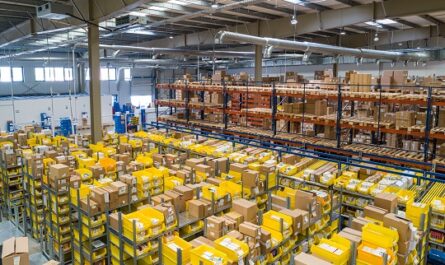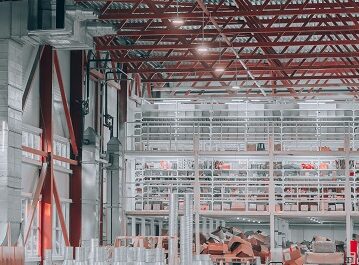Your storage space is full. All of the places where materials or finished goods can be stored are full. Even now, there are already goods in the aisles between the shelves. This has, of course, made it hard to run the warehouse.
On the other hand, things have been like this before, not just this time. It seems like having more stock than a warehouse can hold has become the norm. No longer is it a problem. And you start to wonder if your warehouse isn’t big enough. Or, you might want to add more space to your warehouse by building a new one or renting one.
The important question is whether or not you should really do that. Is there really not enough space in your warehouse? Or, can’t you do anything else?
In this post, we’ll talk about that.
But before you do that, make sure you have also joined the scmguide telegram channel. I share a lot more about supply chain management there, and it will make sure you don’t miss the latest blog updates.
Table of Contents
Your warehouse doesn’t have enough space? Should you rent a warehouse or build a new one?
Building or renting an extra warehouse seems like the most sensible and easy thing to do, doesn’t it?
That’s all you’d have to do. But you have to remember that the choice will cost you money. To run this option, you have to spend a lot of money.
The question is, what can you do if you don’t add more space to your storage?
As the name suggests, the storage capacity is affected by two things. The size of the warehouse and the amount of goods you store.
So really, you have two choices. You can add more space to your storage or take things out of your storage.
The second choice will be less expensive.
You might also like:
- Everything You Need to Know About Plastic Pallets: Types, Uses and Benefits
- 6 Effective Stocktaking Steps For More Accurate Results
How to reduce stored inventory
What should be done if reducing stock really is a better and less expensive solution?
You can do the steps below.
Check how much space you have in your warehouse
Before you lower your inventory level, you need to be sure that the problem isn’t that you have too much stock or that your warehouse doesn’t have enough space.
How?
You have to figure out how much inventory you can store with the space you have right now. How many days’ worth of your stock can fit in the warehouse.
Then, compare it with how goods are moving out of the warehouse now and in the future.
Is it ideal?

Let’s look at an extreme case to help you understand. You have a 10,000-square-meter warehouse. The warehouse has room for 10,000 of your items. On the other hand, you only sell about 100 items per day, and you can get these items quickly from local suppliers and your own production facilities.
In this situation, your warehouse can hold enough stock for up to 100 sales days. Obviously, this number is too high. Even if you only have 500 items in your warehouse, that’s enough to back up your sales numbers. The space for inventory reduction is the difference between how much you can store and how many things you should store. In this case, it’s not that your warehouse is too small, but that you have too much stock.
Before you decide to add more storage space, you should do an evaluation like this.
If you have the right amount of stock, you have to expand your warehouse, of course. But if it’s not ideal, it’s clear that it’s better to cut back on stock.
Align supply and demand
Getting supply and demand in sync is one of the best ways to keep inventory levels steady. By doing this, you’ll only save the amount of inventory you need. Which means that you won’t need to store as many things in your warehouse.
Improve sales forecast accuracy
One of the things that has a big impact on your efforts to match supply and demand is the sales forecast. You can’t expect perfect accuracy, but making improvements over time will help your efforts.
You can do this in different ways that make the most sense for your business.
You might also like:
- Why You Don’t Always Need to Check On Hand Stock
- 5 Reasons Why It’s Important to Go to the Workplace in Person
Cut down on the number of items that suppliers send
When your warehouse is full, one of the most common reasons is that your supplier is sending a lot of goods. Which is more than what you need right then.
You can divide that number of deliveries into smaller groups and send them more often.
But before you do that, make sure your supplier has a good on-time delivery performance and quality ratio. If you send fewer items, your warehouse will have less stock. And if the goods arrive late or aren’t of good quality, it can have a direct effect on how your business runs.
So, make sure you choose which suppliers can implement your new scheme and which can’t.

You can use this plan if your supplier always sends your order on time and the quality is always good. But if that’s not the case, you need to give your supplier time to improve before you use the same shipping plan as a better supplier.
You can also do this when making things to reduce the amount of finished goods you need to store. You should work on making your finished products better and making them faster. So, you can reduce the amount of finished goods you need to keep on hand as a safety stock and, in turn, the amount of warehouse space you need.
Conclusion
Don’t jump to the conclusion that your warehouse is too small just because it’s full. Don’t be in a hurry to decide whether to build or rent more warehouses.
First, take a look at how your supply chain is doing. Is it because you don’t have enough space to store things or because you have too much stuff?
In the second case, the best thing to do is to lower the amount of stock you have. Some of the steps above can help you do that.
Don’t make decisions about the supply chain before you look at the real situation. Especially if the choices you make will cost you a lot of money.
Sometimes, the real problem in the supply chain is hidden by other problems. If you make the wrong choice, it won’t just change nothing; it will make things worse.
Hope it helps!
If you think this article is helpful, send it to your friends so they can also learn from it. Join the scmguide telegram channel to get the latest blog posts and more information about supply chain management. You can use any of the articles on this blog for whatever you want, even to make money, without having to give credit.

 by
by 

